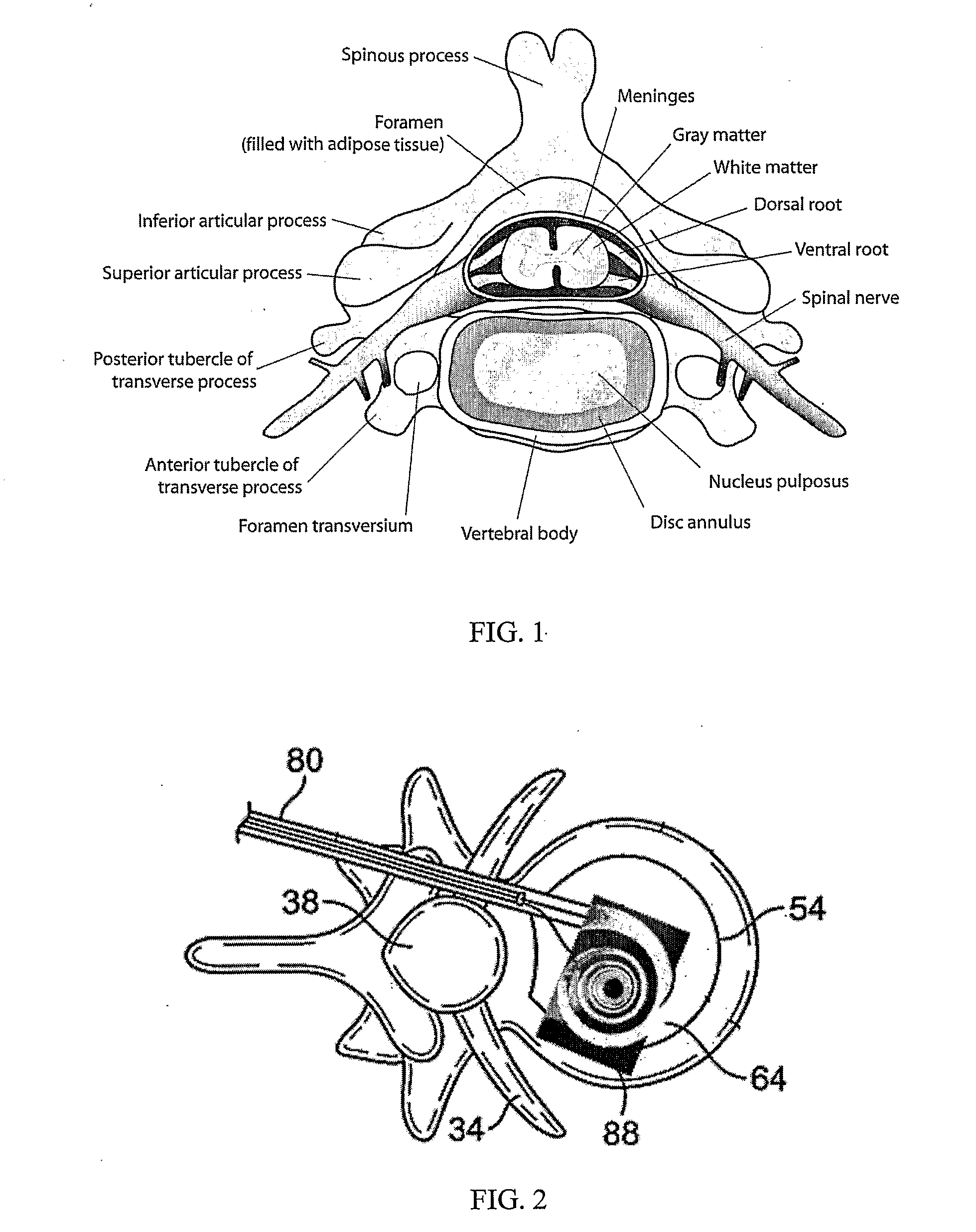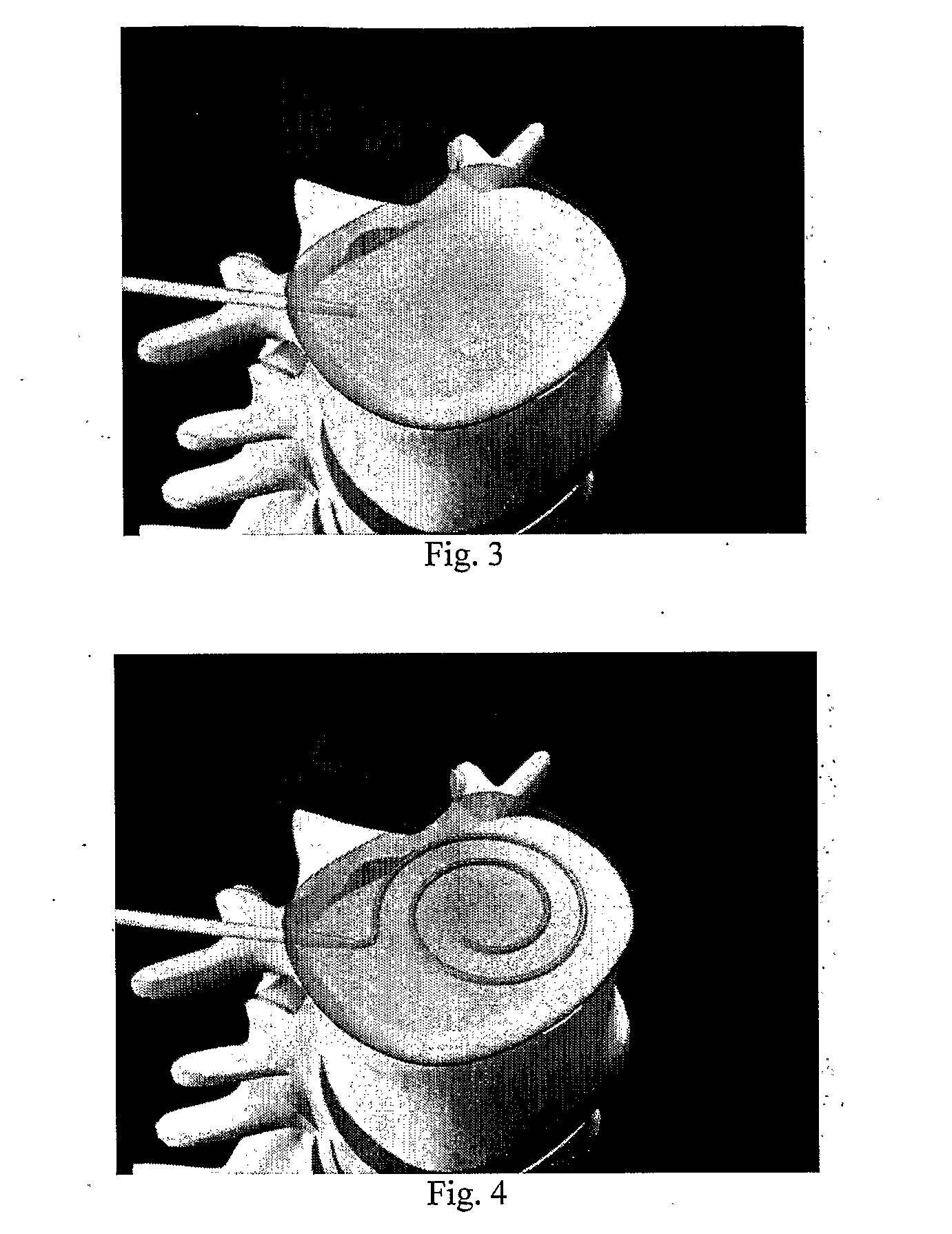Restorative device
a technology of a recovery device and a disc, which is applied in the field of recovery devices, can solve the problems of affecting the function of narrowing the space for the spinal cord and nerve roots, so as to slow down the degradation of the disc and slow down the degeneration
- Summary
- Abstract
- Description
- Claims
- Application Information
AI Technical Summary
Benefits of technology
Problems solved by technology
Method used
Image
Examples
example 1
Restoration of the Disc's Mechanical Properties by the Implantation of the Gel / Filler
[0311]Reference is now made to FIG. 26 which illustrates % strain vs. stress in Kg. As can be seen from the figure a normal disc demonstrates a linear behavior (illustrates as numerical reference 181). Furthermore, the post discectomy mechanical behavior (illustrates as numerical reference 182) illustrates arrival to a yield point is reached after a stress of 50 Kg is exerted.
[0312]On the contrary, the post discectomy mechanical behavior when the device of the present invention is used (illustrates as numerical reference 183), demonstrates mechanical behavior which is similar to that of the normal disc (i.e., linear behavior).
[0313]Reference is now made to FIG. 26 which illustrates the disc behavior under compression of a normal disc (illustrates as numerical reference 191), a degenerated disc (illustrates as numerical reference 192), a no cross linking—no hyaluronate (illustrates as numerical refer...
example 2
(%) Increase in Neural Foramen Size
[0317]Reference is now made to FIG. 29 which illustrates the increase (%) in neural foramen size in different models plastic model, sheep spine, degenerated human spine.
[0318]As can be seen from the figure, while using the balloon, gel and the balloon and gel in plastic model gives the same results, using the balloon and gel combined with the balloon in sheep spine, degenerated human spine provides 6 to 17 times better results.
example 3
Disc Height Increase—Balloon and Gel Vs. Gel Alone
[0319]Reference is now made to FIG. 30 which illustrates disc height increase when a balloon and gel / filler are used and when the gel / filler alone is used in different models.
[0320]As can be seen from the figure, there is no difference between using the balloon alone, the gel alone or the balloon and gel in the plastic model.
[0321]On the other hand performing the same experiment, in sheep's spine using the gel alone provide a relatively small increase in the disc height, while using the balloon and the combined gel and balloon provides 4-5 times more elevation in disc height.
[0322]The same is observed in human spine.
[0323]The main difference between the balloon alone and the balloon and gel is the fact the balloon maintains disc height disc as long as the balloon is kept inflated. On the other hand the gel injection allows maintenance of disc height constantly without the requirement to keep the balloon inflated.
PUM
| Property | Measurement | Unit |
|---|---|---|
| pH | aaaaa | aaaaa |
| dimensions | aaaaa | aaaaa |
| volume | aaaaa | aaaaa |
Abstract
Description
Claims
Application Information
 Login to View More
Login to View More - R&D
- Intellectual Property
- Life Sciences
- Materials
- Tech Scout
- Unparalleled Data Quality
- Higher Quality Content
- 60% Fewer Hallucinations
Browse by: Latest US Patents, China's latest patents, Technical Efficacy Thesaurus, Application Domain, Technology Topic, Popular Technical Reports.
© 2025 PatSnap. All rights reserved.Legal|Privacy policy|Modern Slavery Act Transparency Statement|Sitemap|About US| Contact US: help@patsnap.com



